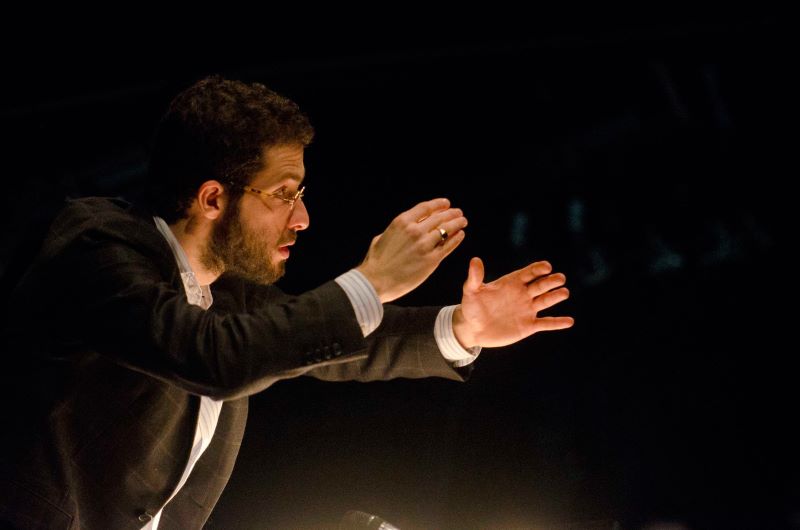No orchestra wants its conductor to cancel in the week of a concert. Mirga Gražinytė-Tyla’s illness was announced only on Monday, but even in ideal conditions, if you needed to find a last minute replacement maestro for a programme of Bartók and Bruckner, you could hardly do better than Omer Meir Wellber: a conductor with whom the City of Birmingham Symphony Orchestra has built a relationship that predates his recent appointment to the BBC Philharmonic in Manchester.
And of course – always worth the price of admission – we still had Piotr Anderszewski as soloist in Bartok’s Third Piano Concerto. Wellber’s opening orchestral shimmer had an electrical charge to it: a sound that had an unquestionable presence in the hall and a sign that this performance was to be a dialogue as much as a matter of colour and atmosphere. Anderszewski declaimed his opening melody as if improvising; the movement that followed was a thing of clear edges, bold primary colours and a Mozartian sense of proportion, vividly articulated by a particularly plangent-sounding woodwind section and Anderszewski’s way of admitting just the tiniest suggestion of a lift at the end of a phrase.
In the Adagio religioso, too, Wellber gently teased out the texture of the opening string chorale – so often played at a breathless, homogenous whisper, but here very much alive and moving, with the cellos and basses softly tugging the music forward. The stillness that surrounded Anderszewski’s responses was all the more profound because of it: he placed lucid, luminous chords directly into the silence as if he was setting jewels into snow. And he never appeared to break a sweat in the finale, powering through thunderous double-octaves in perfect step with Wellber’s buoyant, whirling dance rhythms. Should it really look this easy? I just know that the final, headlong bars – the ones that the dying Bartók only sketched, leaving the orchestration to Tibor Serly – sounded as purposeful as they were exultant.
Wellber (pictured above, by Tato Baeza) carried that same control and sense of purpose, into Bruckner’s Sixth Symphony. No suggestion of a regimented march rhythm here: the violins’ opening pulse was like a firing synapse, as the main theme accelerated from a standing start to a genuinely thrilling momentum. That opening burst of energy charged the whole performance; the strings almost seeming to swing their second subject forward over pizzicato basses, and the thunderclap of Matthew Hardy’s timpani signalling successively more massive brass build-ups. With the timpani behind the first violins, facing off against the basses, and the brass forming an unbroken wall across the back of the orchestra, Bruckner’s monumental climaxes were as black toned and weighty as any Wagnerite could have wished.
And yet there was plenty of enchantment here: the rich, singing intensity of the strings at the start of the Adagio, Marie-Christine Zupancic’s sunlit flute soaring like the Woodbird over the outer movements’ more Siegfried-like rustlings, and Wellber’s sometimes poignant, sometimes frustrating way of letting a violin phrase blossom only to sweep the rest of the orchestra onwards and out from under their feet. With nervous energy in every bar, as well as an absolute refusal to indulge in bombast, the final ascent – resplendent as it was, with the CBSO’s horns punching for the heavens – felt like something more provisional than a grand entry into Valhalla. But the audience cheered anyway: perhaps in recognition that while more romantic visions of Bruckner are certainly available, Wellber had given us something of intelligence, integrity and real - if sometimes troubling – beauty.














Add comment